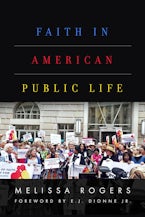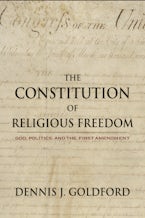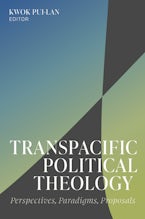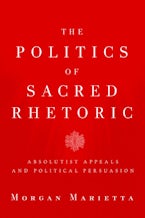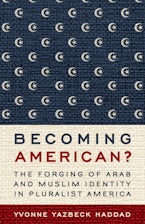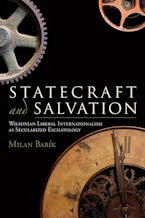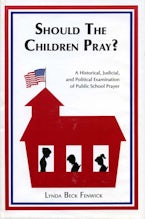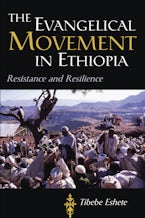- Home
- political science
- religion
- Religious Freedom and the Supreme Court
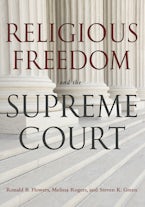
Religious Freedom and the Supreme Court
by Ronald B. Flowers, Melissa Rogers and Steven K. Green
Imprint: Baylor University Press
Sales Date: 2008-12-31
1200 Pages, 7.00 x 10.00 x 2.76 in
Toward Benevolent Neutrality (5th edition, 1996), a longstanding favorite for professors of church-and-state relationships in the U.S., has been revised and updated by one original author, Robert B. Flowers, and two new ones, Melissa Rogers and Steven K. Green. Religious Freedom and the Supreme Court contains a new introduction clearly explaining specific ways the Court delineates the idea of religious freedom on a case-by-case basis. As clearly written as its predecessor, and as appropriate for the classroom, this new book contains explanations of more recent cases, decided by a contemporary Supreme Court. It is clear, relevant, and an essential text for the twenty-first century.
Part 1
Introduction
1 The Impact of the U.S. Supreme Court on American Religious Freedom
§1 Understanding the Supreme Court
§2 Understanding the Protection of "Rights" and "Liberties"
2 The Historical Background to the First Amendment Religion Clauses
3 Themes and Trends in First Amendment Interpretation
§3 Originalism and Its Critics
§4 "Nonpreferentialism" and Government Financial Aid for Religion
§5 Incorporation of the Establishment Clause
§6 The "Distinctiveness" of Religion
§7 "No-Aid Separation" v. "Evenhanded Neutrality"
§8 Use of Speech Principles in Religion Clause Jurisprudence
§9 Accommodation of Religion
§10 "Play In the Joints"
§11 "Complementary Values, Conflicting Pressures"
4 What Is Religion?
5 The Concept of Standing
§12 Flast v. Cohen
§13 Valley Forge College v. Americans United for Separation of Church and State
§14 Hein v. Freedom From Religion Foundation
§15 Elk Grove Unified School District v. Michael A. Newdow
Part 2
The Free Exercise Clause
6 Basic Concepts and Development of Free Exercise Doctrine
§16 The "Belief-Action" Dichotomy (Reynolds v. United States; Davisv. Beason)
§17 Religious Liberty as Due Process Liberty (Pierce v. Society of the Sisters of the Holy Names of Jesus and Mary)
§18 Conscientious Objector Cases (United States v. Schwimmer; Girouard v. United States; Hamilton v. Regents of the University of California)
§19 Embracing Free Exercise as a Right (Cantwell v. State of Connecticut; West Virginia State Board of Education v. Barnette; Prince v. Massachusetts)
§20 Early Free Exercise on Government Property (Davis v. Commonwealth of Massachusetts; Murdock v. Pennsylvania; Heffron v. International Society for Krishna Consciousness; International Society for Krishna Consciousness v. Lee)
7 Rise and Fall of Free Exercise Exemptions: From Sherbert to Smith
§21 The Rise of Judically Mandated Free Exercise Exemptions (Sherbert v. Verner; Wisconsin v. Yoder)
§22 Refining the Sherbert Test (United States v. Lee; Thomas v. Review Board; Hobbie v. Unemployment Appeals Commission of Florida; Frazee v. Illinois Employment Security Department)
§23 Free Exercise in Transition (Bowen v. Roy; Lyng v. Northwest Indian Cemetery Protective Association; Goldman v. Weinberger; O'Lone v. Estate of Shabazz; Hernandez v. Commissioner of Internal Revenue; Jimmy Swaggart Ministries v. Board of Equalization)
8 Rise and Fall of Free Exercise Exemptions: Smith and Beyond
§24 The Fall of Judicially Mandated Free Exercise Exemptions (Employment Division v. Smith)
§25 The Free Exercise Clause Beyond Smith (Church of Lukumi Babalu Aye v. City of Hialeah)
§26 Congress Stands in the Gap: RFRA and RLUIPA (City of Boerne v. Archbishop Flores; Gonzales v. O Centro Espirita Beneficente Uniao Do Vegetal; Cutter v. Wilkinson)
9 Churches and the Civil Justice System
§27 Church Autonomy/Schisms (Watson v. Jones; Gonzalez v. Roman Catholic Archbishop of Manila; Kedroff v. St. Nicholas Cathedral; Presbyterian Church in the United States v. Mary Elizabeth Blue Hull Memorial Presbyterian Church)
§28 Religious Torts (United States v. Ballard; Nally v. Grace Community Church; Molko v. Holy Spirit Association; Moses v. Diocese of Colorado)
10 Religious Organizations as Employers
§29 Government Oversight of Employment Practices (National Labor Relations Board v. The Catholic Bishop of Chicago; Tony and Susan Alamo Foundation v. Secretary of Labor)
§30 Employment Actions by Religious Organizations (Corporation of the Presiding Bishop of the Church of Jesus Christ of Latter-Day Saints v. Amos; Equal Employment Opportunity Commission v. Pacific Press Publishing Association; Gellington v. Christian Methodist Episcopal Church, Inc.; Bollard v. California Diocese
of the Society of Jesus)
Part 3
The Establishment Clause I
11 Government Funding of Religious Schools: The Rise and Application of the "No-Aid" Principle
§31 The Emergence of Nonsectarian Public Education and the No-Funding Principle; Developing Principles (Everson v. Board of Education of Ewing Township)
§32 The High Point of "No-Aid" (Lemon v. Kurtzman; Committee for Public Education and Religious Liberty v. Nyquist; Committee for Public Education and Religious Liberty v. Regan; School District of Grand Rapids v. Ball)
12 Government Funding of Religious Schools: The Rise of Even-handed Neutrality and Private Choice
§33 Mueller v. Allen; Zobrest v. Catalina Foothills School District; Agostini v. Felton; Mitchell v. Helms
§34 Zelman v. Simmons-Harris; Locke v. Davey
13 Government Aid to Higher Education
§35 Tilton v. Richardson; Hunt v. McNair
§36 Roemer v. Board of Public Works of Maryland
14 Religious Organizations and Government-Funded Social Services
§37 Bradfield v. Roberts; Bowen v. Kendrick
§38 "Charitable Choice" and the "Faith-Based Initiative" (Charitable Choice; The Bush Administration's Faith-Based Initiative [Executive Order 13279]; Freedom from Religion Foundation v. McCallum)
15 Government Funds and Religious Institutions: A Look toward the Future
Part 4
The Establishment Clause II
16 Religious Expression and Public Schools: Background, Released-Time Programs and the 1960's School-Prayer Decisions
§39 Historical Background: The Common School Movement
§40 "Released-Time" Programs (McCollum v. Board of Education; Zorach v. Clauson)
§41 State-sponsored Prayer and Bible Reading: The 1960s Cases (Engel v. Vitale; School District of Abington Township v. Schempp)
17 Religious Expression in Public Schools: Moments of Silence and Post-1960s School-Prayer Cases
§42 Wallace v. Jaffree
§43 Lee v. Weisman
§44 Santa Fe Independent School District v. Doe
18 Religious Expression in Public Schools: Religion and the Curriculum and Presidential Guidelines on Religion and Public Schools
§45 Religion and the Public School Curriculum (Religious Objections to Curriculum: Evolution and Religion [Epperson v. Arkansas; Edwards v. Aguillard]
§46 "Opt outs" [Mozert v. Hawkins County Board of Education]
§47 School-sponsored Religious Displays
§48 Teaching About Religion in an Academic, Rather than a Devotional, Manner)
§49 Presidential Guidelines on Religious Expression in Public Elementary and Secondary Schools ("Guidance on Constitutionally Protected Prayer in Public Elementary and Secondary Schools")
19 Equal Access
§50 Widmar v. Vincent
§51 Board of Education v. Mergens
§52 Lamb's Chapel v. Center Moriches Union Free School District
§53 Good News Club v. Milford Central School
§54 Other Religious Expression/Access Issues (Rosenberger v. Rector and Visitors of the University of Virginia)
20 Religious Symbols on Government Property
§55 Lynch v. Donnelly
§56 County of Allegheny v. American Civil Liberties Union
§57 Capitol Square Review v. Pinette
§58 McCreary County v. American Civil Liberties Union
§59 Van Orden v. Perry
21 Government Acknowledgements of Religion, Government Chaplains, Religion and Politics, and Religion in the Governmental Workplace
§60 Governmental Acknowledgements of Religion and Government Chaplains (Marsh v. Chambers; Katcoff v. Marsh; Delores Rudd v. The Honorable Robert D. Ray)
§61 Religion and Politics (McDaniel v. Paty; Branch Ministries v. Rossotti)
§62 Religion in the Federal Workplace ("Guidelines on Religious Exercise and Religious Expression in the Federal Workplace")
22 Religious Preferences/Delegations
§63 Government Preferences of Religion (Torcaso v. Watkins; Larson v. Valente)
§64 Government Delegations of Authority to Religion (Larkin v. Grendel's Den; Board of Education of Kiryas Joel Village School District v. Grumet)
23 Legislative Accommodation of Religious Exercise
§65 Walz v. Tax Commission of the City of New York
§66 Trans World Airlines v. Hardison
§67 Estate of Thornton v. Caldor
§68 Corporation of Presiding Bishop of the Church of Jesus Christ of Latter-day Saints v. Amos
§69 Texas Monthly v. Bullock
§70 Board of Education of Kiryas Joel Village School District v. Grumet
§71 Cutter v. Wilkinson
Appendices
A Bill Establishing a Provision for Teachers of the Christian Religion
A Bill for Establishing Religious Freedom
Memorial and Remonstrance against Religious Assessments
Selected Bibliography
Notes
Ronald B. Flowers (Ph.D. University of Iowa) is John F. Weatherly Emeritus Professor of Religion at Texas Christian University. Flowers is the author of That Godless Court: Supreme Court Decisions on Church-State Relationships (2005).
Melissa Rogers (J.D. University of Pennsylvania School of Law) is Visiting Professor of Religion and Public Policy and Director, Center for Religion and Public Affairs, at Wake Forest University Divinity School. She is the author of Faith in American Public Life (2019).
Steven K. Green (J.D. University of Texas, Ph.D. University of North Carolina) is Professor of Law and Director, Center for Religion, Law and Democracy, Willamette University.
An authoritative handbook striking in its probing analysis of the enduring teachings of the First Amendment.
~John Witte Jr., Jonas Robitscher Professor of Law, Emory Law School, Director, Center for the Study of Law and Religion
Religious Freedom and the Supreme Court will become the standard classroom text for instruction in religion clause jurisprudence. It masterfully blends texts of Supreme Court decisions, scholarly commentary, helpful notes and discussion questions, and an outstanding bibliography. This volume has no equal as an instructional tool on church-state relations and religious freedom in the United States and could readily be used in undergraduate, graduate and law school classrooms.
~Derek H. Davis, Dean College of Humanities and Dean of the Graduate School, University of Mary-Hardin Baylor
This volume will serve serious students and caring citizens well in their quest for understanding how the Supreme Court of the United States has understood and applied the First Freedom--our precious heritage of religious liberty. The explanatory material in each chapter sets the stage for the order of the cases. But the heart of the book is the decisions. The cases speak for themselves about the work of the Supreme Court throughout its history.
~Mark E. Chopko, Adjunct Professor of Law, Georgetown University and former General Counsel of the United States Conference of Catholic Bishops
This volume is hefty and comprehensive but also straightforward, accessible, and well organized.... Perceptive study questions point the reader toward both open questions and animating premises.... recommended.
~First Things

